MARCH 4, 2025: Last night, we arrived in Milan, Italy—or is it Milano? Milan is the English name, while Milano is the Italian one.
Milan Malpensa Airport is about an hour northwest of the city center, and we had arranged for a private driver to take us to our apartment. By the time our flight landed, it was too dark to see much, and with our Israeli driver navigating using Waze in Hebrew, it felt as if we hadn’t entirely left home yet.
Our apartment is in the central district, in the Porta Venezia neighborhood in a building that was probably once beautiful and elegant, but now simply looks old and covered with graffiti. Inside, in the spacious stairwell, a small wire-enclosed elevator had been added. Since we were on the top floor—the fifth—and, as always, traveling with many suitcases, the elevator was much-appreciated. In contrast to the building’s worn exterior, the apartment itself had been recently renovated, and was modern and spacious.
This morning, we woke up to see the two grand buildings of Porta Venezia across the street. These mark the spot where the original Roman city gate once stood, serving as the eastern entrance to the city. Almost all of the wall that surrounded the city is long gone, but some of the gates remain. This gate was rebuilt in the neoclassical style in the 19th century.
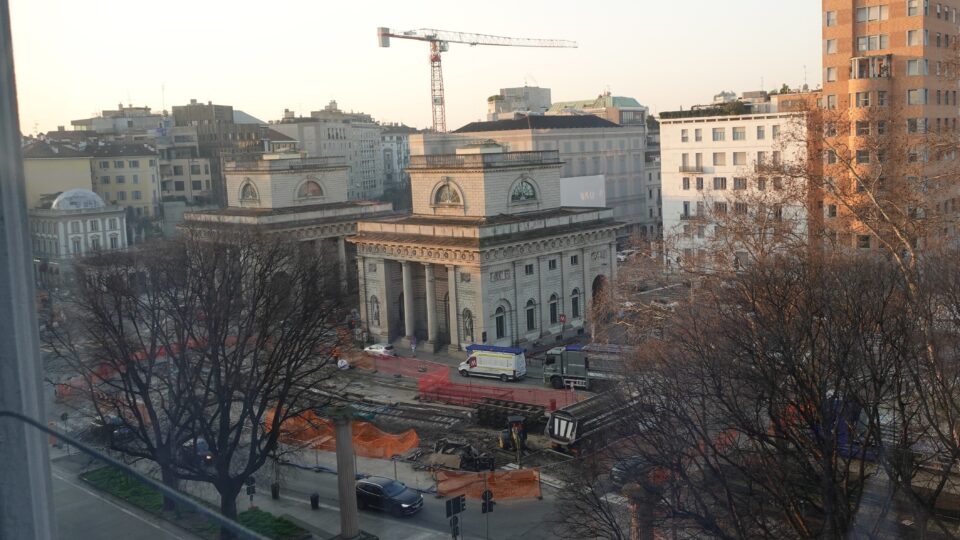
After a delicious cappuccino at a local bakery, we headed to meet our guide for a Jewish Tour of Milan. To reach the meeting spot, we walked down Corso Venezia, a busy street lined with large buildings, some originally were palaces. Most had huge, tall entranceways that led to large courtyards. These grand entrances, along with columns, clean, straight lines and symmetry characterize the neoclassical style of the 18th-19th century. This was a time when horse-drawn carriages were the main mode of transportation and the high entranceways allowed carriages to pass through into the courtyards.
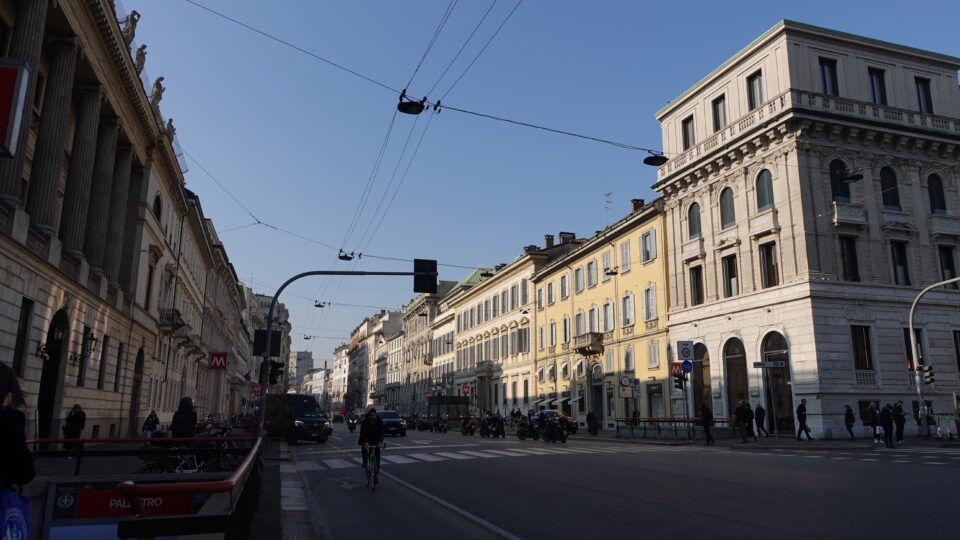
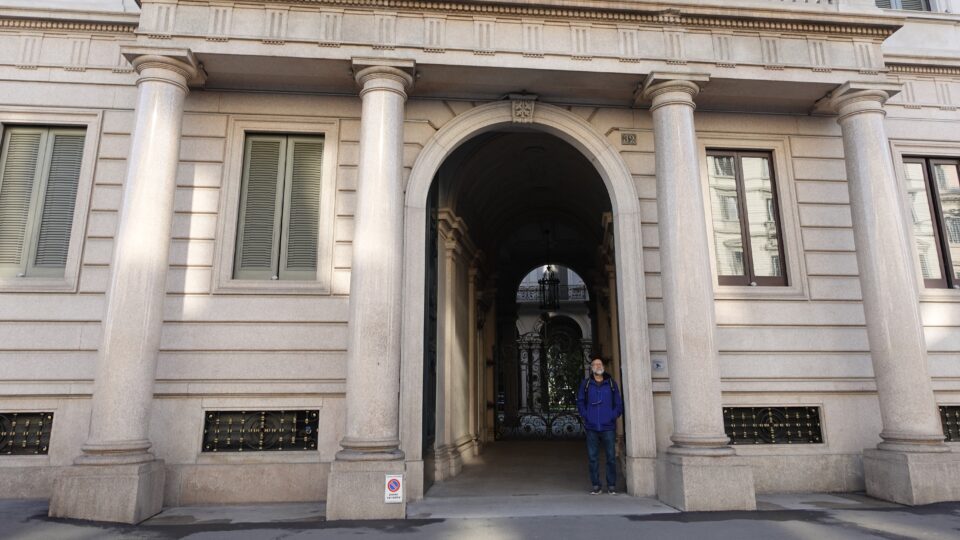
In front of the Lego store in San Babila, we met our guide – an Israeli who move to Milan seven years ago. When travelling, even though we do lots of research before we go, having a local guide always adds a new perspective to what we already know. Highly recommended.
We learned that while Rome is the political capital of Italy, Milan is the business center and its second-largest city. Today Milan has a population of almost 1.4 million people. Milan is also one of the “Big Four” – the four fashion capitals of the world, the others being Paris, London and New York. Yesterday was the last day of Milan’s Fashion Week, an event held twice a year where designers showcase their latest collections of clothing and accessories.
From the meeting point, we walked down Corso Victor Emmanuel II. Victor Emmanuel II was the first king of a united Italy. He helped to consolidate various independent states and territories into one nation and became the first king of Italy on March 17, 1861, when the Kingdom of Italy was officially proclaimed. Most Italian cities will have a street or a statue in his honor.
Corso Victor Emmanuel II was the first pedestrian walkway created in Milan and once had many cinemas. Today these have been replaced with fashion boutiques and restaurants. The Zara store kept the entrance of the cinema as it once was, preserving the double staircase entrance, a Murano glass chandelier, and other original features.
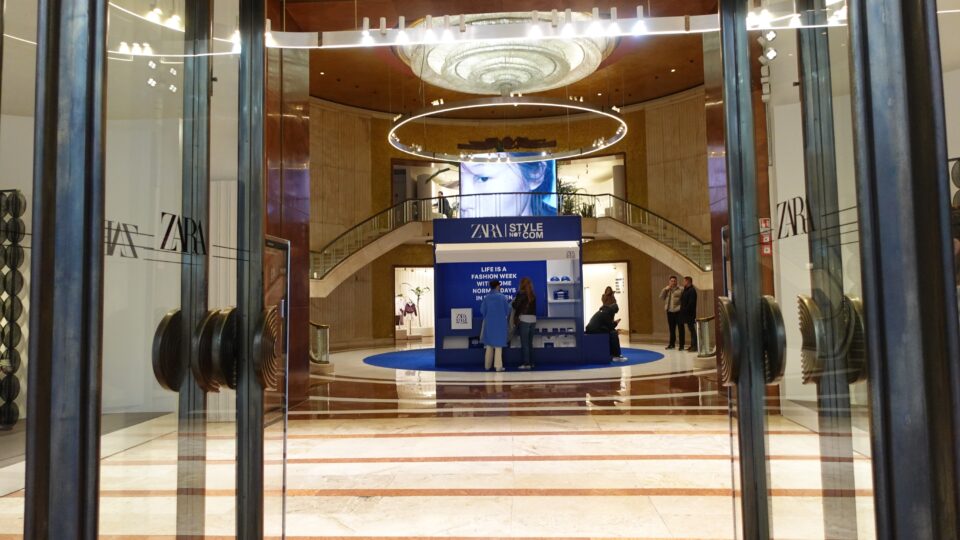
Later, in doing research for this blog, I learned that this flagship Zara store also has Interactive Mirrors: Equipped with RFID technology, these mirrors recognize selected garments and suggest additional complimentary items to enhance the shopping experience. Something I wish we had seen.
As you walk the streets of Milan, you see many different architectural styles. During WWII, one-third of the city was destroyed and in rebuilding, modern buildings were placed alongside historical ones.
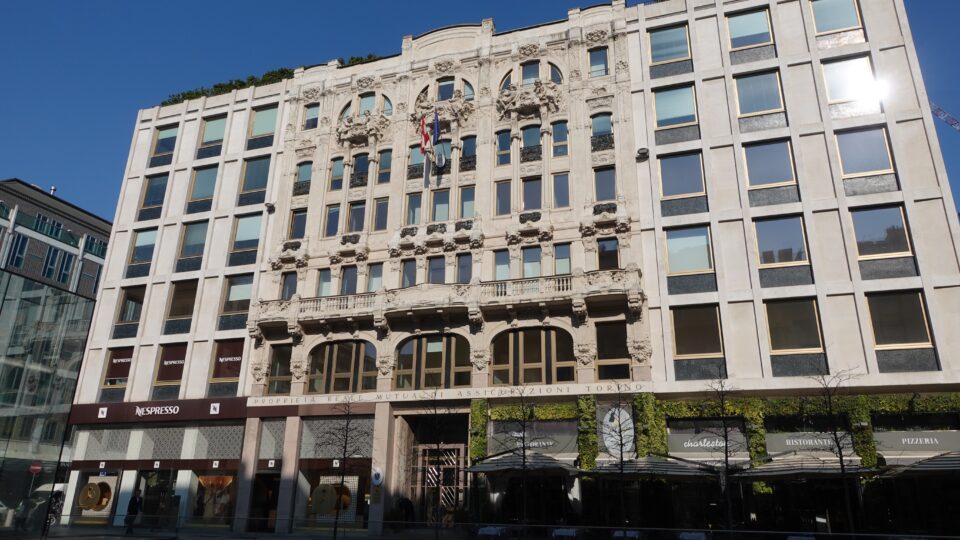
At the start of World War II, Mussolini had already established a totalitarian regime in Italy. During his early years in power (1922–1938), Italian Jews generally enjoyed civil rights and were integrated into society. The community in Milan grew to over 12,000 Jews. The situation changed in 1938 when Mussolini aligned more closely with Nazi Germany, and introduced laws that stripped Jews of Italian citizenship, barred them from public jobs, education, the military, and imposed severe restrictions on their lives.
After Mussolini was overthrown in 1943 and Nazi Germany occupied northern Italy, the situation worsened even further. From 1943–1945, Jews were actively arrested and taken to Nazi concentration camps. Approximately 1,200 Jews from Milan were deported, primarily to Auschwitz.
The next stop on the tour was in front of the local police station. There on the ground next to the entrance was a Stolpersteine – a stumbling stone. These are brass plates inscribed with the names of victims of Nazi extermination or persecution. They are usually placed in front of the victim’s home or workplace. Luigi Vacchini was in the municipal police force and was involved in collecting money for the Resistance. A neighbor reported him, and he was taken away from this police station where he worked, and being older, he did not survive the forced labor in the camps.
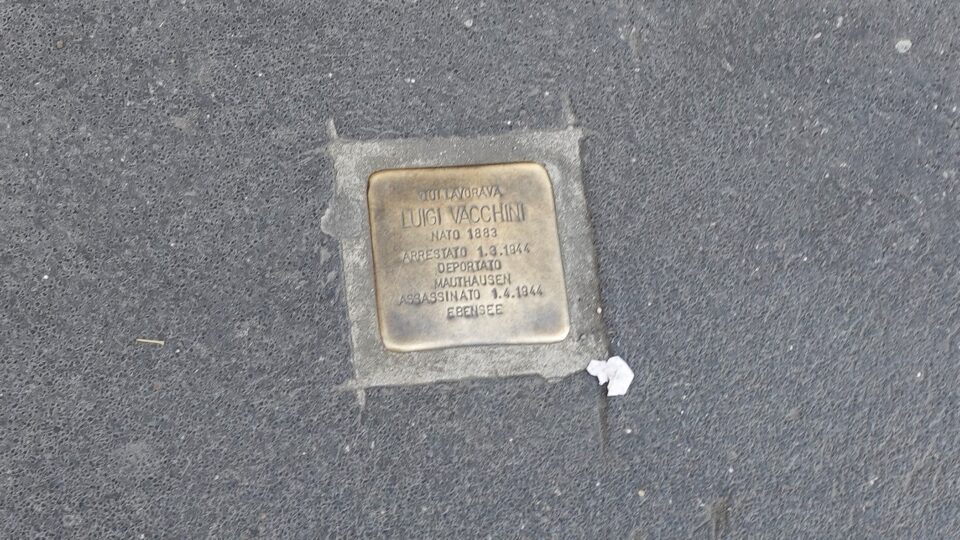
The first Stolperstein in Milan were placed in 2017. Today there are about 200 of them. The include plaques not only for Jews but also for anti-Fascist activists, such as Luigi Vacchini.
Why are the Stolpersteine placed on the pavement and not on the walls of buildings? My understanding up to now was that they are called stumbling stones because as you walk, you stumble upon them. Our tour guide, who spoke with Gunter Demnig, the artist responsible for the Stolpersteine project, had a different answer. She said that Gunter’s intention was to place them on the ground, so when you read the writing on the plaque, you are looking down, bowing your head in an act of respect to the victim.
Our next stop on the Jewish tour was Great Synagogue of Milan (Tempio Maggiore di Milano). This is the main synagogue of the city and the most significant Jewish landmark in Milan. The synagogue was inaugurated in 1892, designed by Luca Beltrami, a renowned Italian architect. The interior of the building was heavily damaged during World War II due to Allied bombings in 1943. Only the front facade survived. After the war, the back of the synagogue was rebuilt with a simpler design, incorporating more modern features. Today, it serves Milan’s Jewish community, hosting religious services, cultural events, and celebrations.
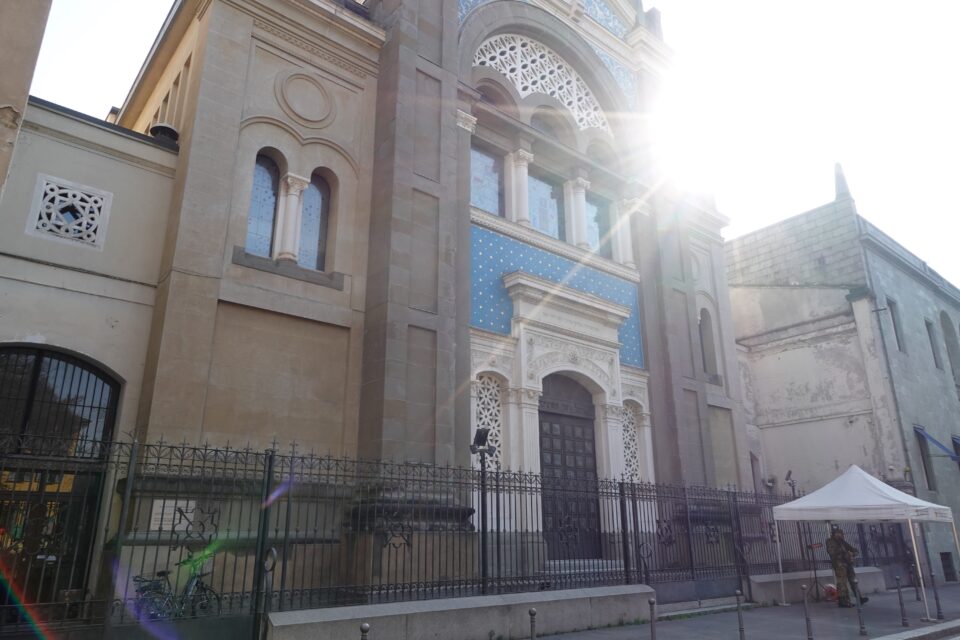
The short residential block that the synagogue stands on is closed to traffic, and Italian army soldiers guard the entrance. Once past the main gate, in the courtyard is a memorial to the Jews killed in the Holocaust. It lists victims’ names both from Milan and from the Lake Maggiore region, north of the city.
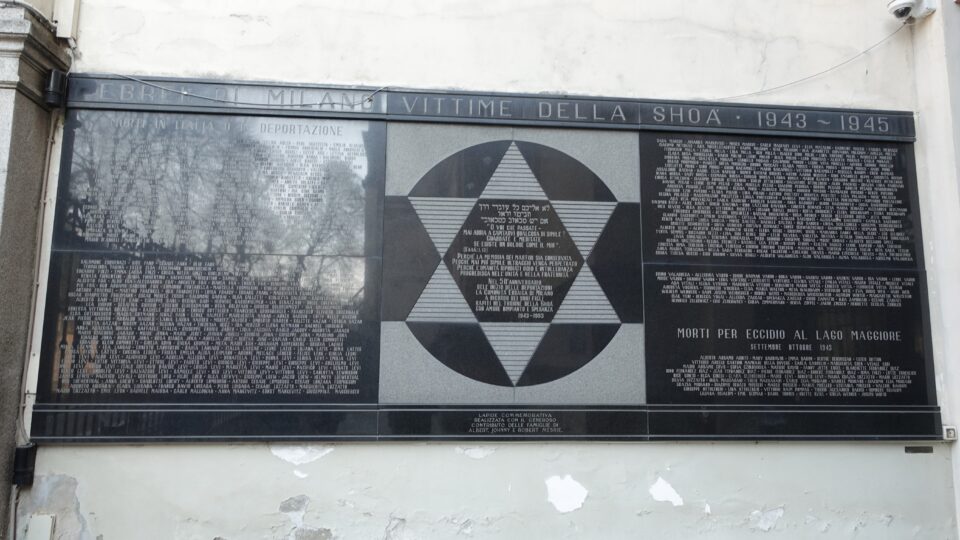
Inside there is a large hall of worship, with the ark in the front and a women’s section on the second floor. The layout corresponds to a typical Ashkenazi synagogue. However, since most of the Milan Jewish community is Sephardic, a second synagogue was built in the basement. This one has a bima in the middle and seats that face the bima, in the Sephardic tradition.
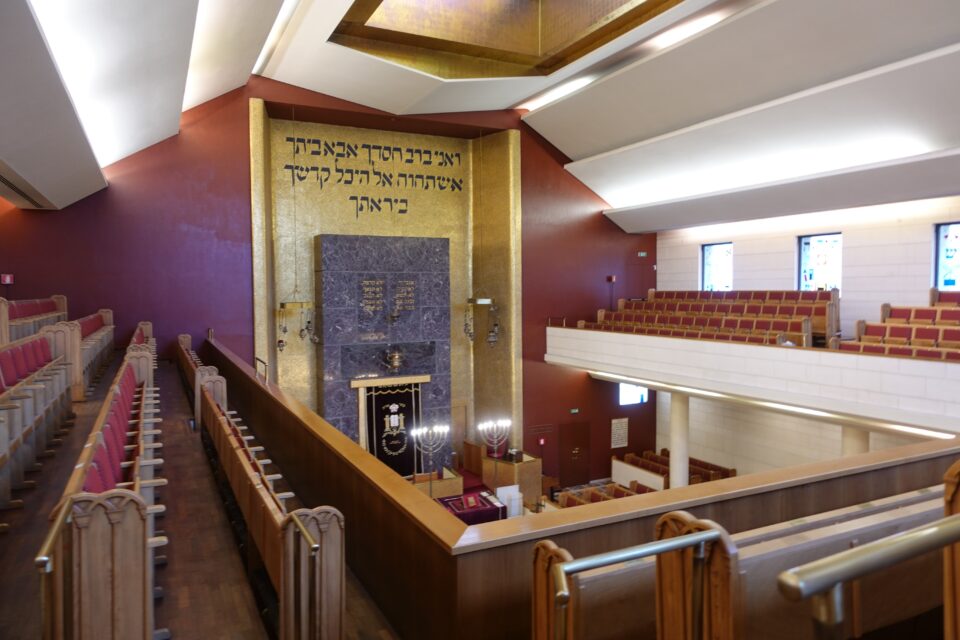

The Allied bombing that destroyed the building also sparked a fire, wiping out all records stored at the synagogue, including birth and wedding documents. As a result, some descendants of Milan’s Jewish community struggle to verify and prove their Jewish lineage. A handful of surviving documents are now on display in the synagogue’s basement.

While walking through the city, we noticed that there is much construction and repairs taking place. We learned that this is in preparation for hosting the Winter Olympics in 2026. In the plaza, on the side of Milan’s famous cathedral is an Olympic countdown clock. In front of the cathedral, they now have a small ice-skating rink and a small ice hockey field, also in honor of the upcoming Olympics.
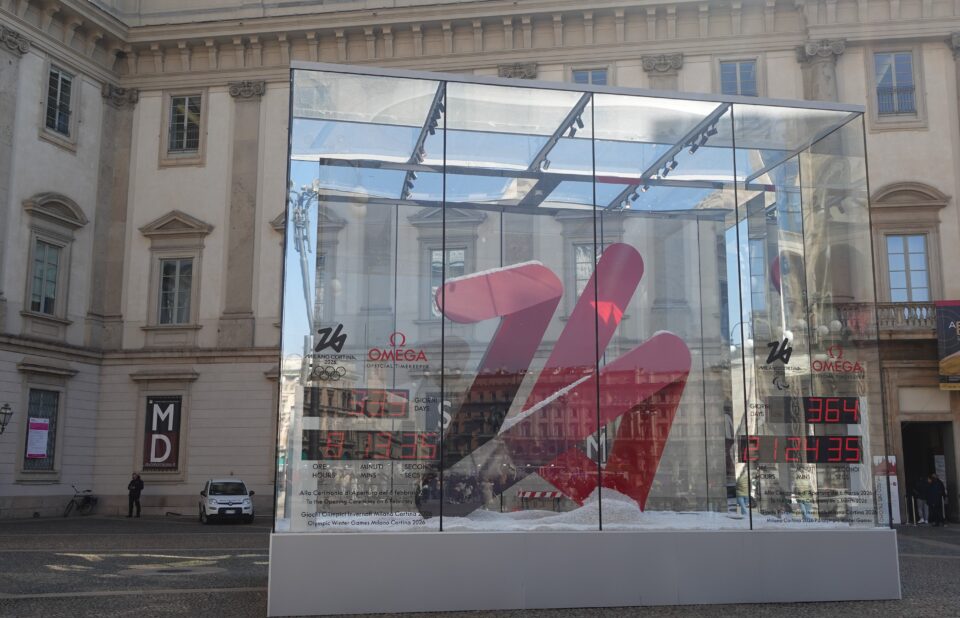
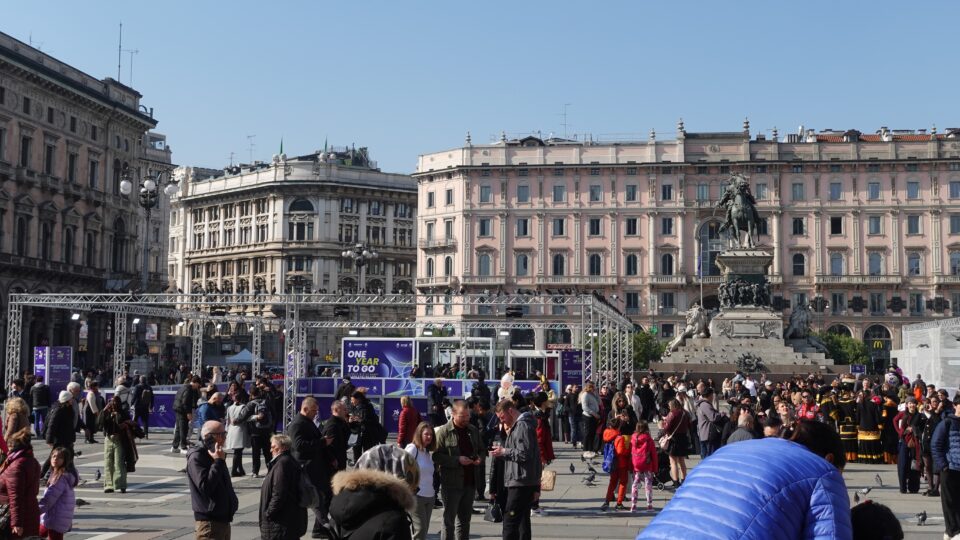
The Cathedral of Milan, known as the Duomo di Milano, is the city’s most iconic landmark and one of the largest churches in the world. Construction began in 1386 and spanned nearly 600 years before completion. Built in the Gothic style, the cathedral features 135 spires and an astonishing 3,400 statues.
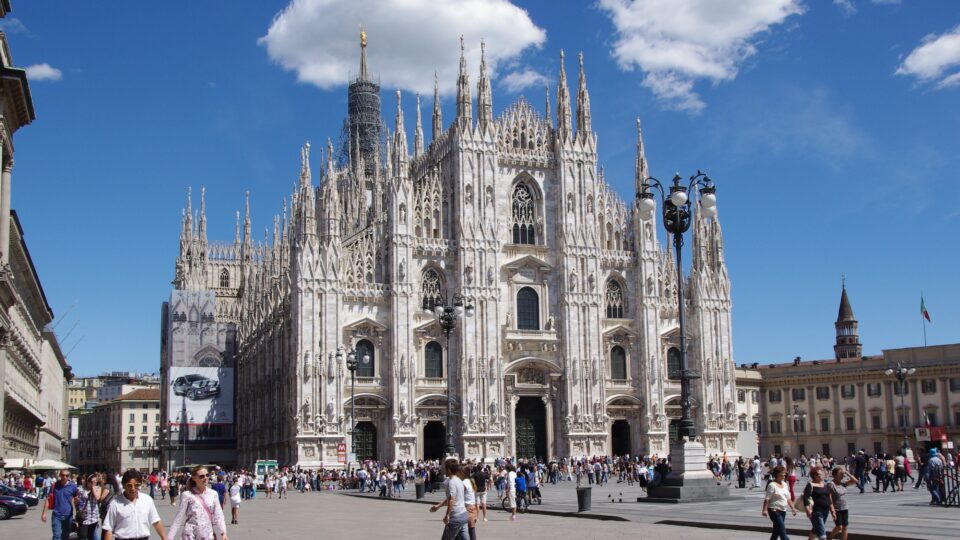
@ Jakub Hałun – Own work, CC BY-SA 4.0 , via Wikimedia Commons
As part of the church’s effort to convert others, the designers sought to create a sense of welcome for Jews by depicting on the building’s exterior scenes that Jews would be familiar with. These include Moses with the tablets, the Tower of Babel, David and Goliath, and other Old Testament themes .

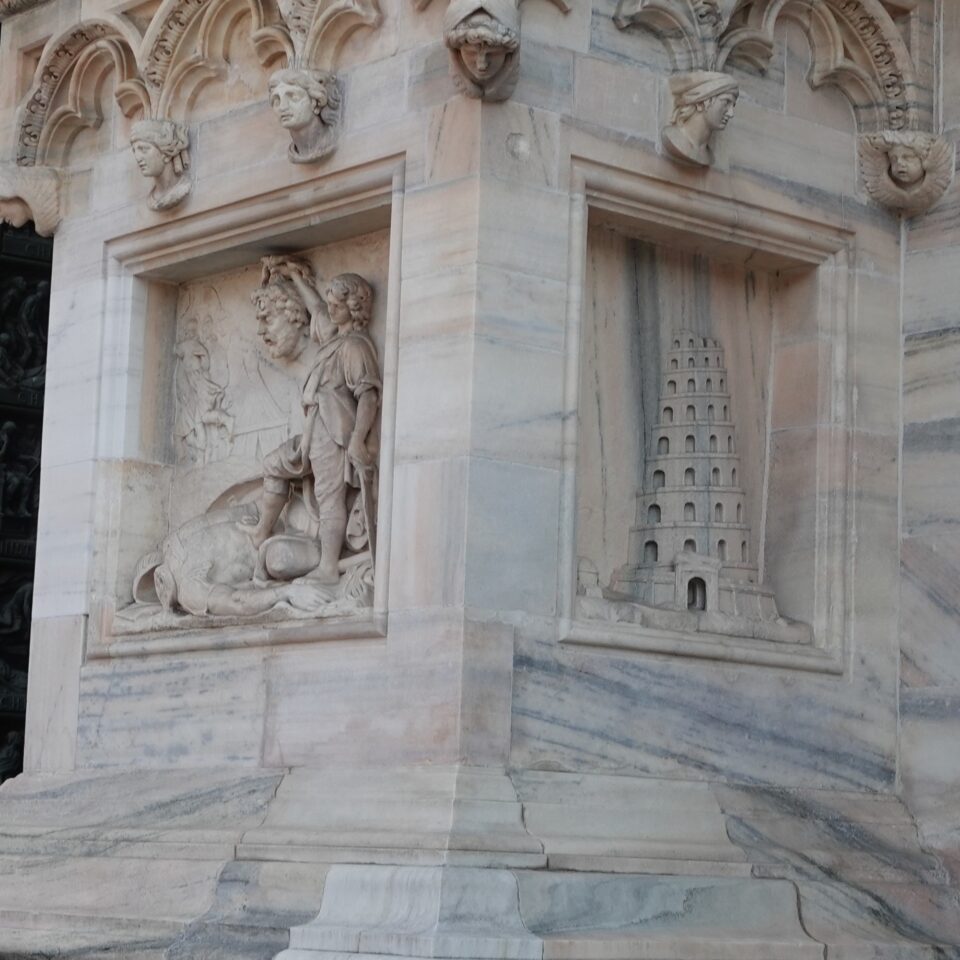
Inside the cathedral are stained glass windows which are among the largest in the world. Several of these include Old Testament themes as well. However, the line to enter the cathedral was very long, and we unfortunately did not go in to see those.
On the other side of the cathedral, a massive video advertisement played — an odd contrast to this spiritual landmark. However, as our tour guide explained, it is a practical way to generate funds for the ongoing maintenance of the Duomo, which is a continuous and expensive effort.
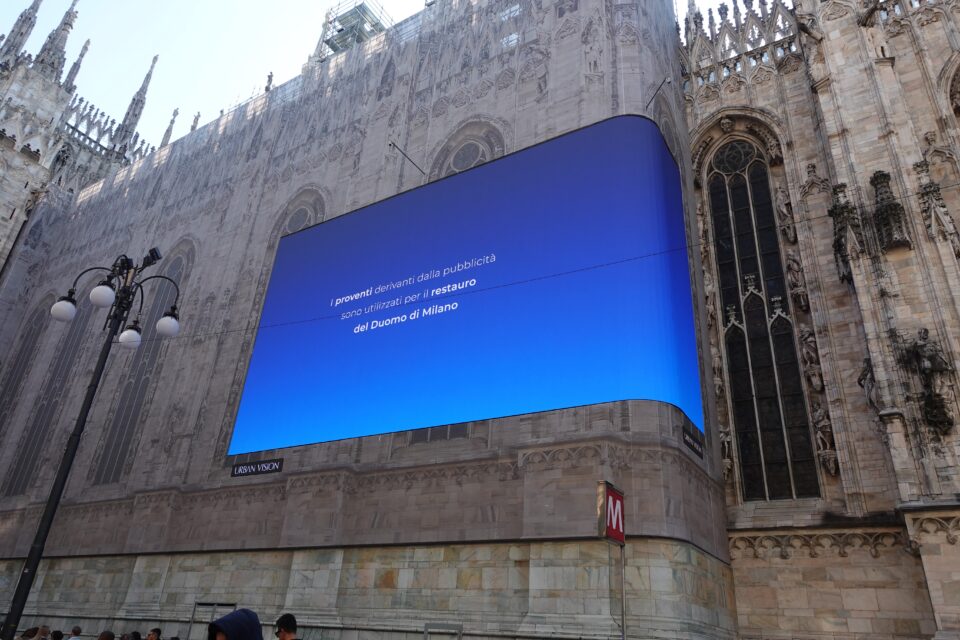
During our visit, the sound of sandblasting echoed through the square as workers cleaned the outer walls. The difference between the restored sections and those yet to be cleaned was striking.
Next to the Duomo, is another of Milan’s iconic landmarks – the Galleria. The Galleria Vittorio Emanuele II (another place bearing the name of the first king of unified Italy) is one of the world’s oldest and most elegant shopping galleries. Built in the shape of a cross, the grand four-story structure features intricate mosaics and a stunning iron and glass dome roof. It is home to luxury boutiques like Prada, Gucci, and Louis Vuitton.

The Galleria was designed by Giuseppe Mengoni, who unfortunately in 1867, fell to his death from the glass dome just a few days before it was to be officially opened.
In the 19th century, it was common for cities to be personified as women in works of art. The central vault ceiling of the Galleria features four striking mosaics, each representing Milan alongside symbolic figures from various continents. In one mosaic, Milan is depicted with a Chinaman representing Asia; in another, she is paired with an Indian representing America. A third shows Milan with an angel symbolizing Europe, and the fourth features Milan with a Black man and a lion representing Africa.
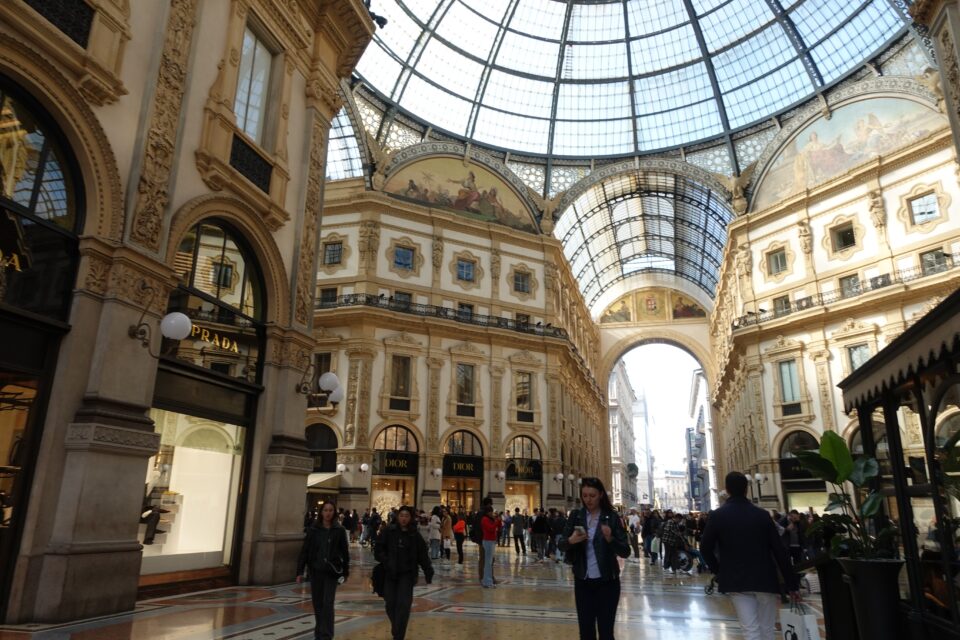




The name Milan originates from the Latin Mediolanum, an ancient term meaning “middle” or “center.” While this typically refers to Milan’s geographic position in the heart of a valley, in these mosaics, Milan is symbolically portrayed as the very center of the world.
From the plaza in front of the Galleria, we took the subway to the Central Station of Milano. This was to be our last stop on the Jewish Tour. The Central Station is huge, and at the back of the station at platform 21 is the Holocaust Memorial, known as the Memoriale della Shoah di Milano. It occupies the site from which hundreds of Jews and political prisoners were deported to Nazi concentration camps between 1943 and 1945. From here, the deportees were loaded at night onto cattle cars on this underground platform and then lifted by elevator to the railway tracks above, preventing the general public from witnessing their departure. Did people not know what was going on right under their noses – who knows?
The Holocaust Memorial was inaugurated in 2013 and includes some of the actual cattle cars used for transport. There is also a large video screen that projects the names of those deported, highlighting several names for a few seconds before proceeding on to more names. Small rooms on the side of the platform screen video testimonials of survivors.
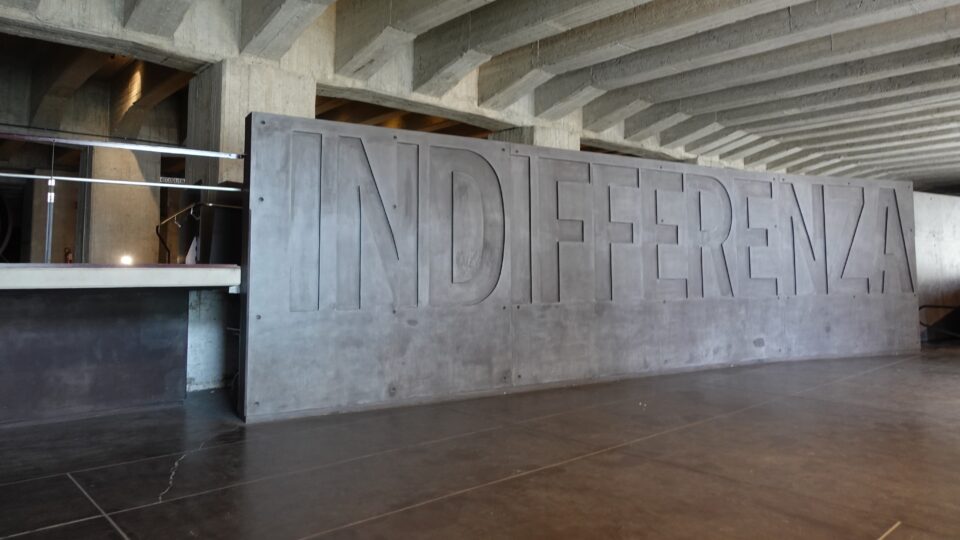
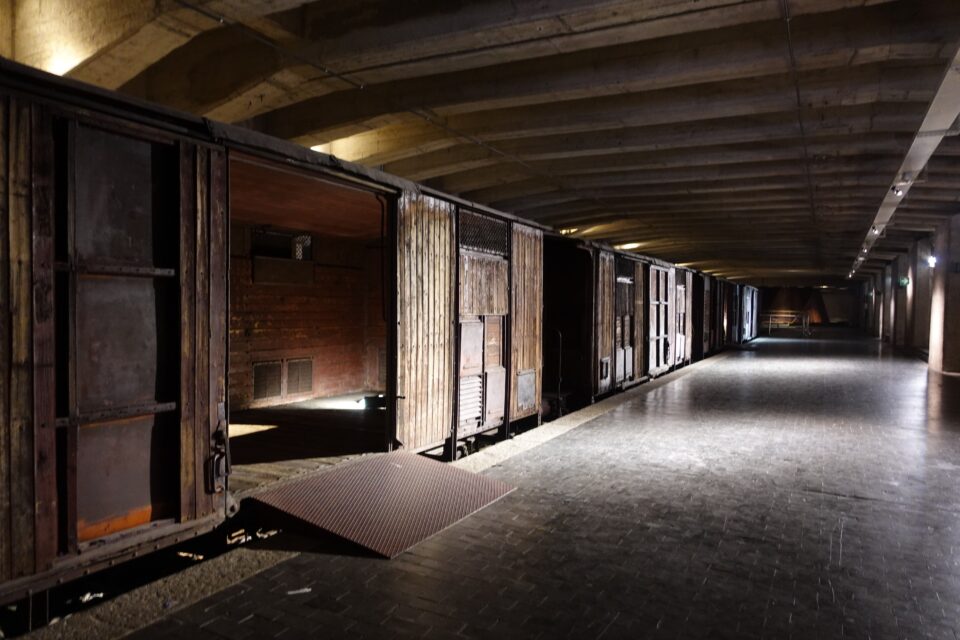
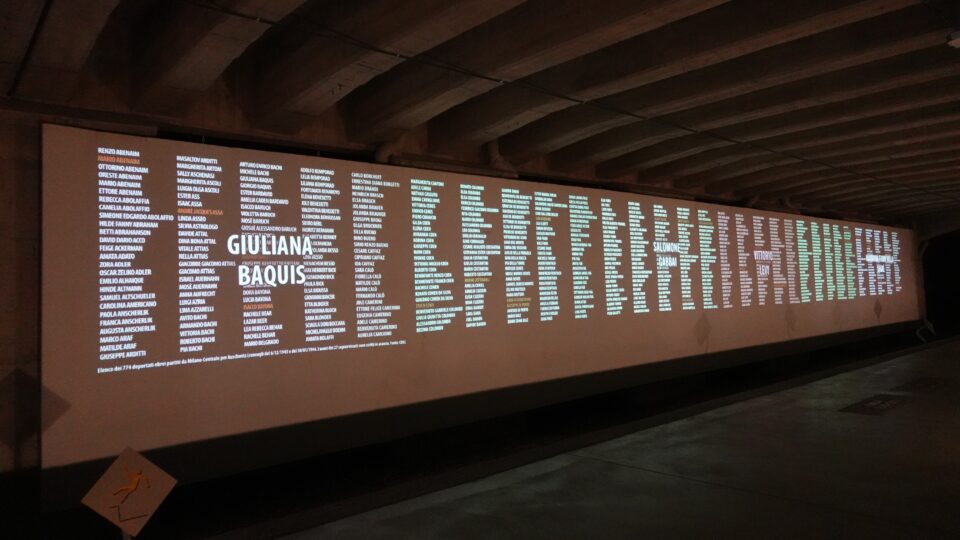
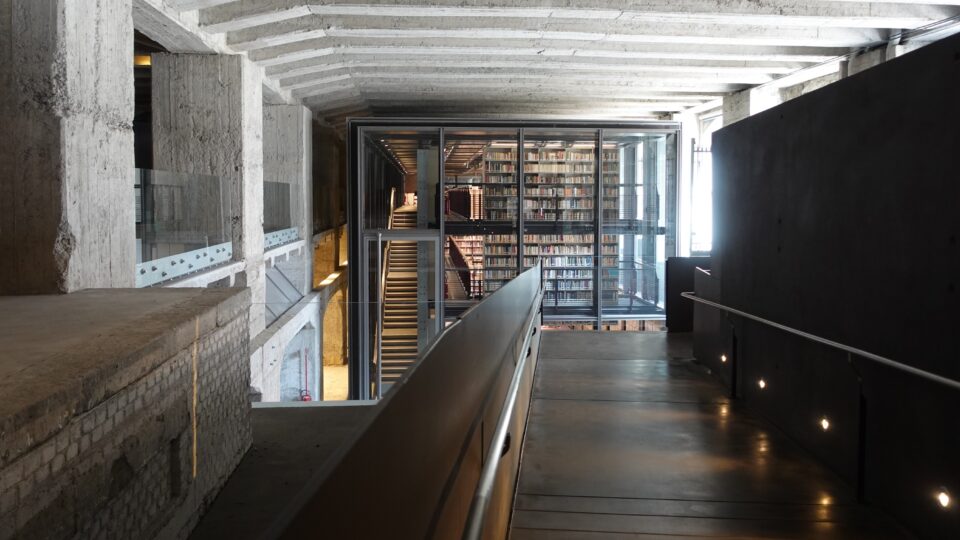
While we were there, two groups of teenage local students were visiting. This memorial helps to ensure that the stories of those deported from Milan are passed to the younger generations and never to be forgotten.
After our somber visit, we had a 1½ kilometer walk back to our apartment. We checked the Happy Cow app for vegan restaurants on the way. There were six of them! Being hungry, we picked Giardi, the closest one, which turned out to be a very good choice.
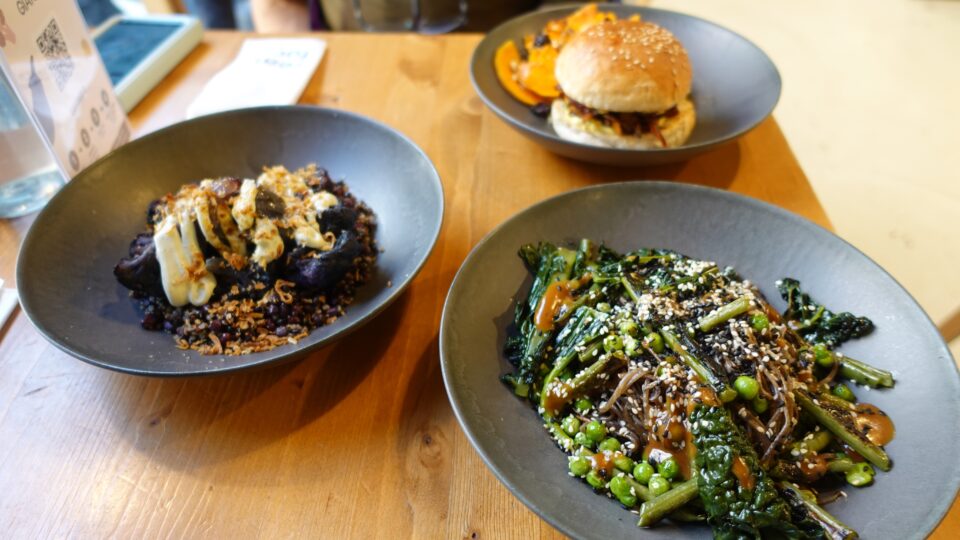
In the evening, we headed out once again. Not too far from our apartment is a replica of the Chabad Lubavitch World Headquarters located at 770 Eastern Parkway in Brooklyn NY. As of recent count, there are approximately 40 replicas of 770 Eastern Parkway worldwide. These exist as a tribute to the Lubavitcher Rebbe, Menachem Mendel Schneerson, and symbolize Chabad’s global mission. The replica in Milan is the only one in Europe and today serves as an educational center.
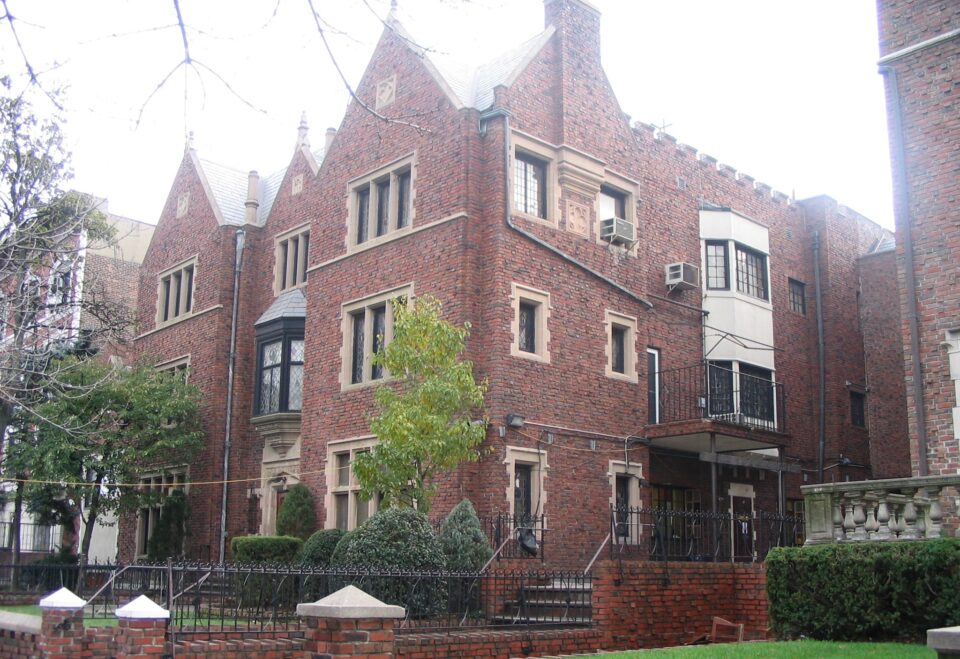
משתמש:אבגד, CC BY-SA 3.0 , via Wikimedia Commons
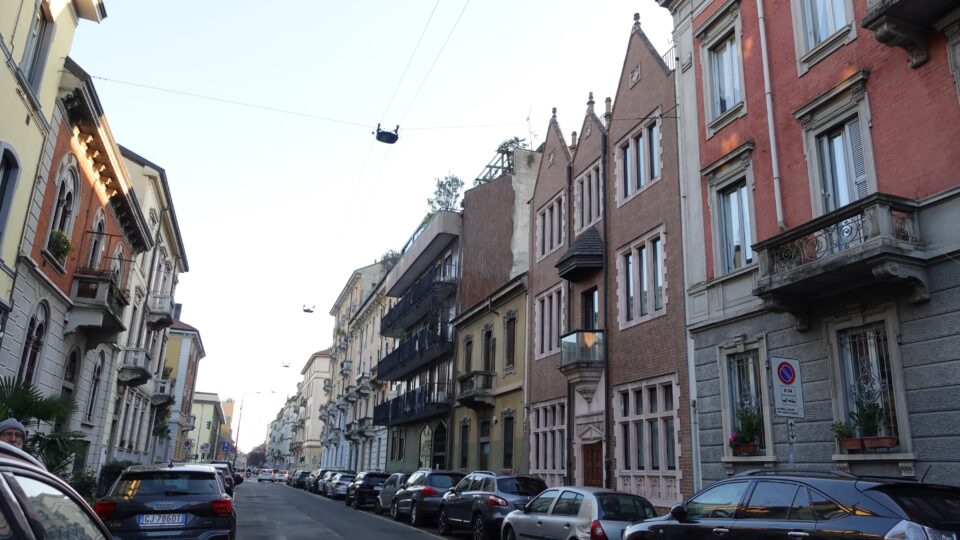
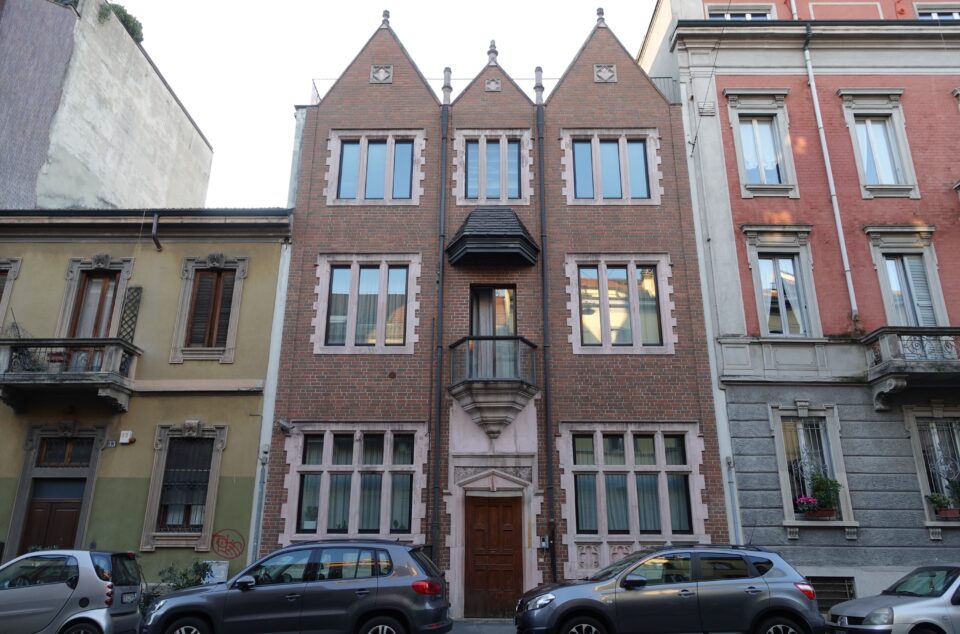
Back at the apartment after a full day and over 19,000 steps, we were ready to call it a night. Today, we explored Jewish heritage sites in central Milan. Tomorrow, we’ll continue our journey, visiting Jewish sites beyond the central district.
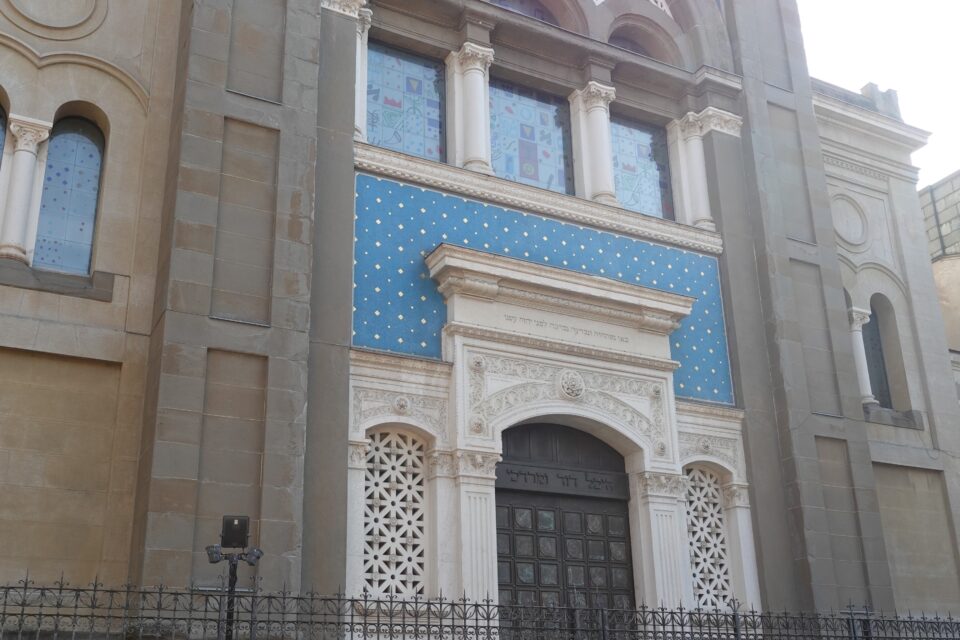
Irit, phenomenal blog post. I learned so many new things about a city that I have visited–but not seen much beyond the Duomo and Galleria. I also didn’t know the Stolpersteine were also dedicated to the memory of non-jews. There is an excellent article on the creator of them in the New Yorker. https://www.newyorker.com/magazine/2015/02/16/last-trial
Great post Ima. Can the pictures with writing not be blurred at the bottom?
mmm the vegan food looks good!!